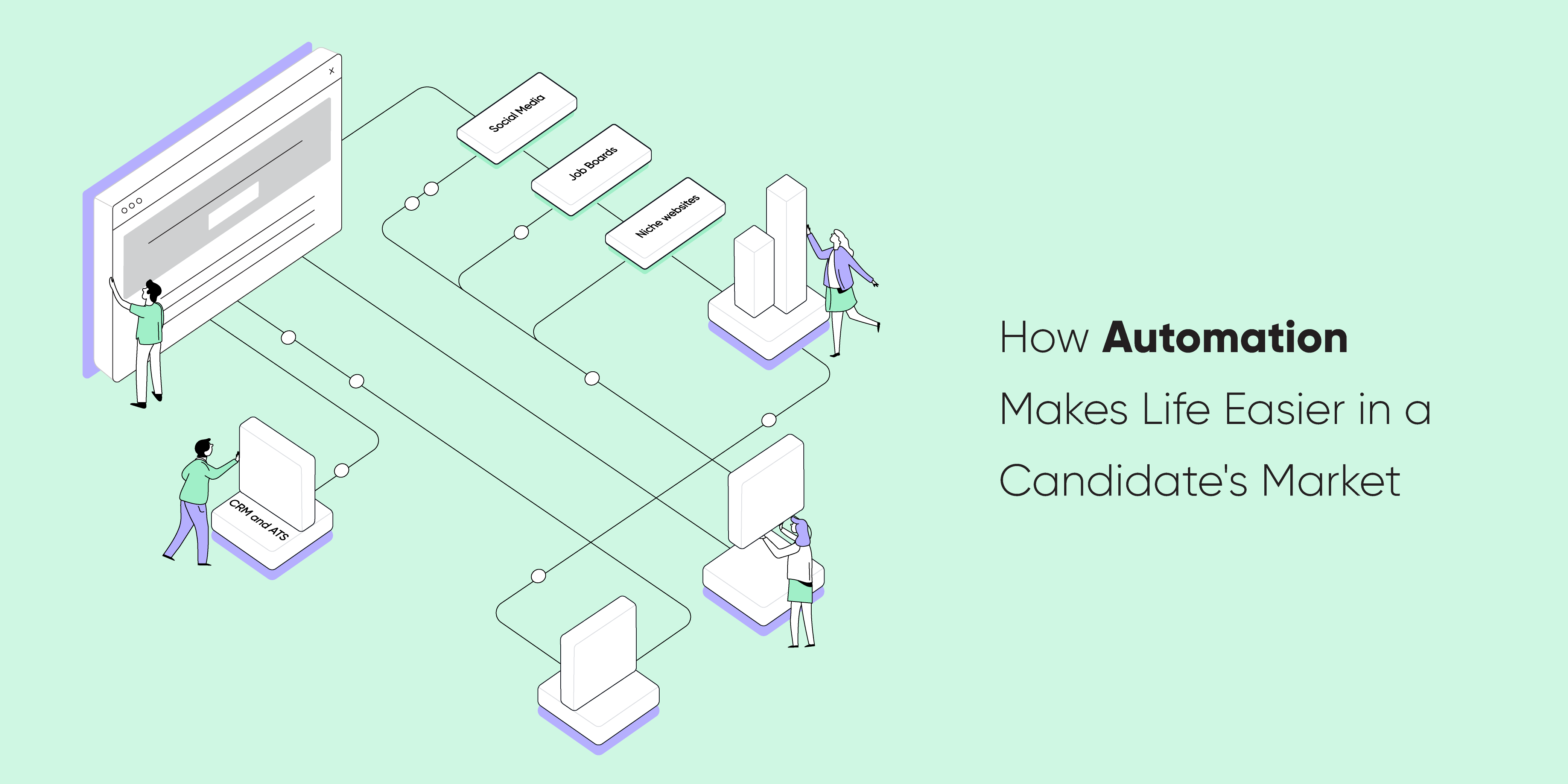As a recruiter, your applicant tracking system (ATS) is one of your most important tools. Without one, it would be exponentially more difficult and time-consuming to track all of the applications that are coming in, pull critical information from those applications, and find the right applicant info for review at the right time. In short, your hiring process would be chaos.
All of that is more than enough to ask from a piece of technology—but if your ATS functions as the heart of your hiring software ecosystem, it’s worth asking if it can do more. Specifically, it’s worth asking whether it’s helping or hurting your recruitment marketing efforts. After all, shouldn’t the technology that’s designed to help you manage talent also be a boon to your efforts to find that talent in the first place?
In case it wasn’t obvious, we think the answer to the question above should be “yes,” and we’ve got a few tips and tricks for making it possible.
1. Update your job openings
From a recruitment marketing standpoint, your ATS might seem like a necessary evil. Sure, you need information about job openings that are native to this particular piece of software, but you might frequently find that accessing that data is difficult or impossible for all but the ATS admins. Worse, you might find that even once you have access to information on job openings and job candidates, it’s either incomplete or not fully up-to-date. It might go without saying that recruitment marketers will need consistent access to the data housed in any given ATS in order to coordinate their efforts with the efforts of hiring managers, but we’re not afraid of being too obvious. Not only should recruitment marketers be able to access the contents of the ATS (in order to better align their employer branding strategies with actual job openings and track the number and quality of applicants produced by those strategies), they should have some way of being sure that the info they’re working with reflects current realities and isn’t outdated.
2. Better yet, automate that process…
If you’re using a separate piece of technology to power your recruitment marketing activities, the ideal scenario would involve some level of integration with your existing software ecosystem—your ATS especially. We saw above that proper visibility between these two business functions can make recruitment marketing more effective, and those effects are only amplified when data from your ATS is automatically imported into your recruitment marketing software, and vice-versa. Instead of creating recruitment advertising campaigns and running the ever-present risk of advertising jobs that are no longer open or targeting first-touch content at demographics who have already entered your applicant funnel (more on that later), you can take a smarter approach. For instance, you can ensure that campaigns for particular jobs automatically stop running when those particular jobs are closed within your ATS, thus ensuring that you won’t find yourself in a position where you’re still advertising jobs that have already been filled. In this way, you can stretch your recruitment marketing dollars much further than you otherwise might have.
3. Focus on applicant experience
So far, we’ve mostly been talking about ways that your ATS can create a disconnect between hiring and employer branding activities—and how to aid recruitment marketing processes by eliminating that disconnect. As promised, though, we’ve reached the point at which we’re ready to talk about your talent funnel. This is an area where, beyond creating or avoiding disconnect, the way you use your ATS can actually determine your success. To wit, the health of your talent pipeline is in large part a matter of providing an applicant experience that delights your potential new hires and makes them think well of your business.
So, you know those incredibly long, complex, and redundant application forms that most applicant tracking systems guide you towards? Those are the opposite of a delightful applicant experience. If your ideal candidate has to fill out 60 or 70 questions without being able to save her progress (or use her mobile phone), she’s not going to think very highly of your company by the time she’s done. We know that plenty of businesses use their ATS to power their application flows, and that’s okay! But by all means, make sure that you’re not overdoing it.
4. Nurture your leads
Okay, so let’s say your ATS is integrated into your recruitment marketing flows and is hooked up to an application process that doesn’t make applicants want to pull their hair out. What else can you do to make sure your ATS is an asset to your employer's branding activities? Well, for one thing, you could start treating it as ground zero for your talent pipeline. Think about it: everyone whose data is in your applicant tracking system has expressed explicit interest in working at your company. Sure, any particular candidate may have been ruled out for the job they actually applied for—but many of them would no doubt love to hear about future openings in your organizations. So, instead of letting former applicants languish in the “ATS black hole,” use their interests as an opportunity to nurture them as leads. Send recruitment-centric content to people who might derive value from it, and even if the recipients themselves never pan out, they’ll be much more likely to sing your praises to their friends and colleagues, potentially growing your talent pool even further.
5. Remember, it’s all about people
At the end of the day, your applicant tracking system really does have the power to help or hinder your employer branding and recruitment advertising efforts. And while there are more than a few technical aspects of your system that you can optimize for this purpose (like those we discussed above), the crucial thing is not to get blinded by technology. At the end of the day, talent acquisition is about creating and developing relationships with people. Your ATS might have the world’s coolest functionality, but if it doesn’t help you delight the real-life human beings who are interested in working for your company, then what’s the point?








